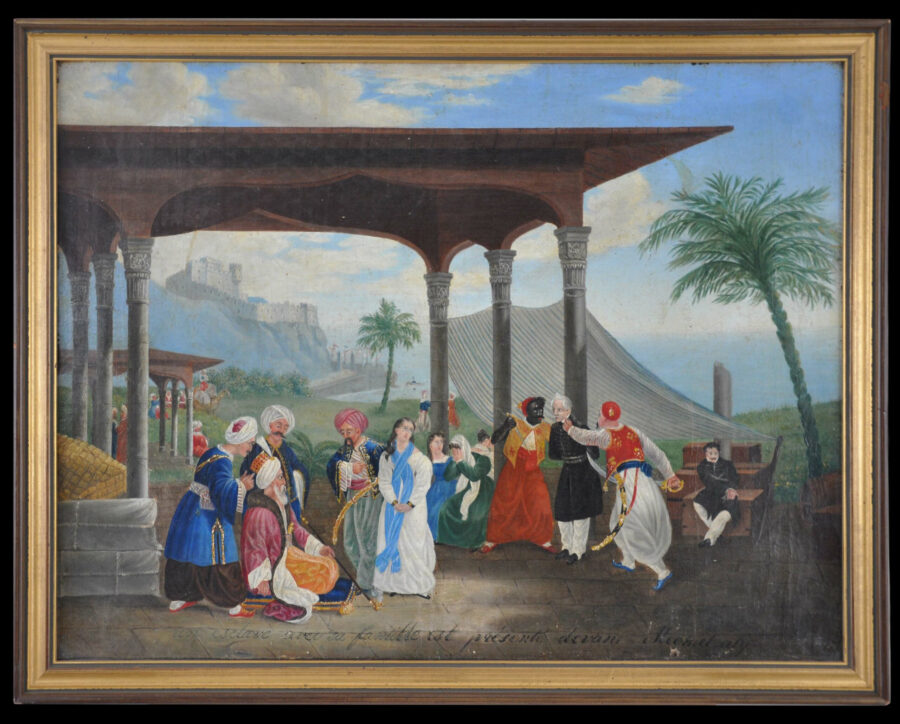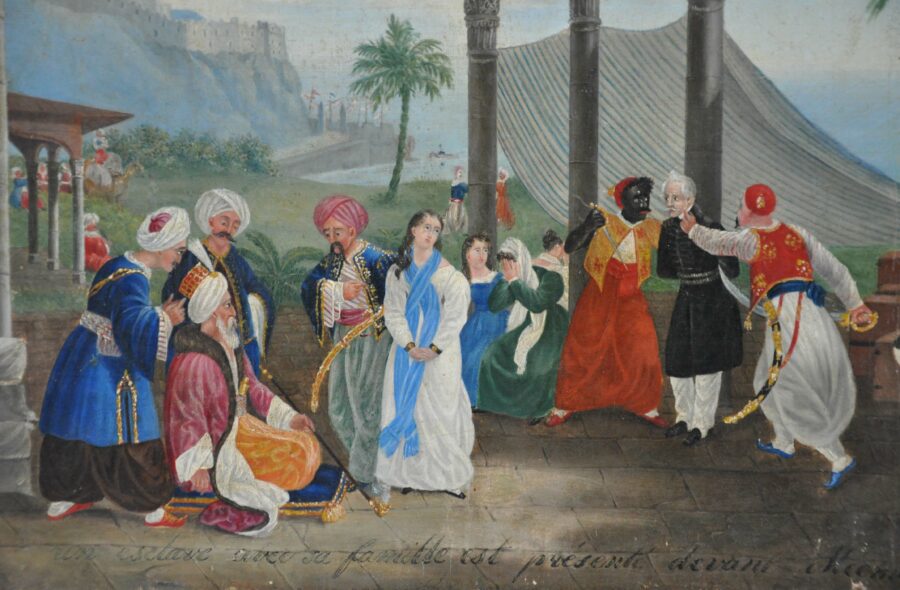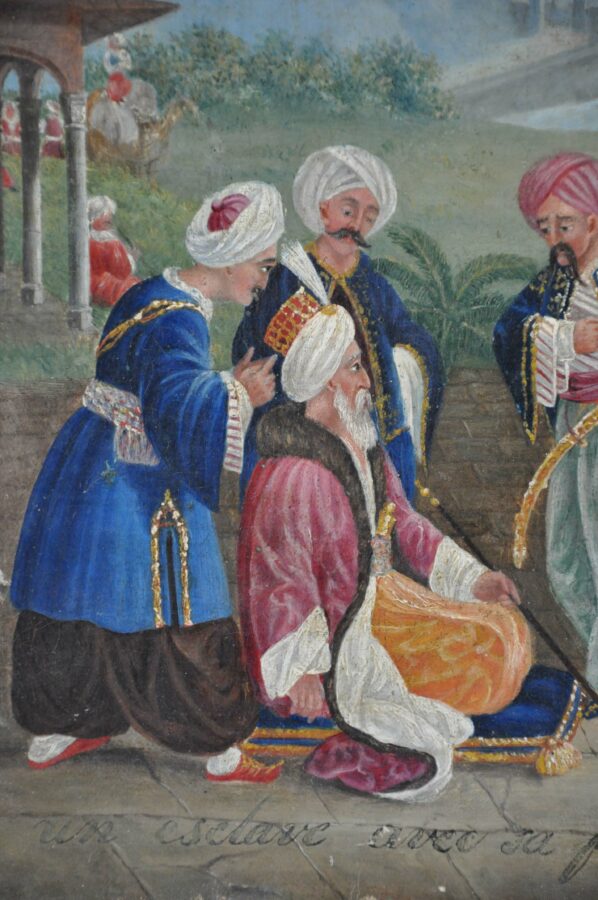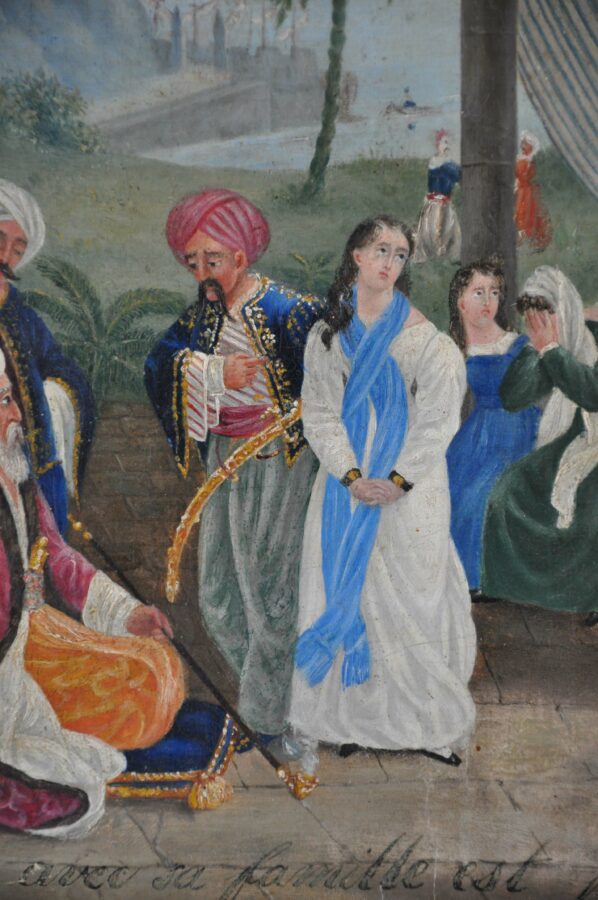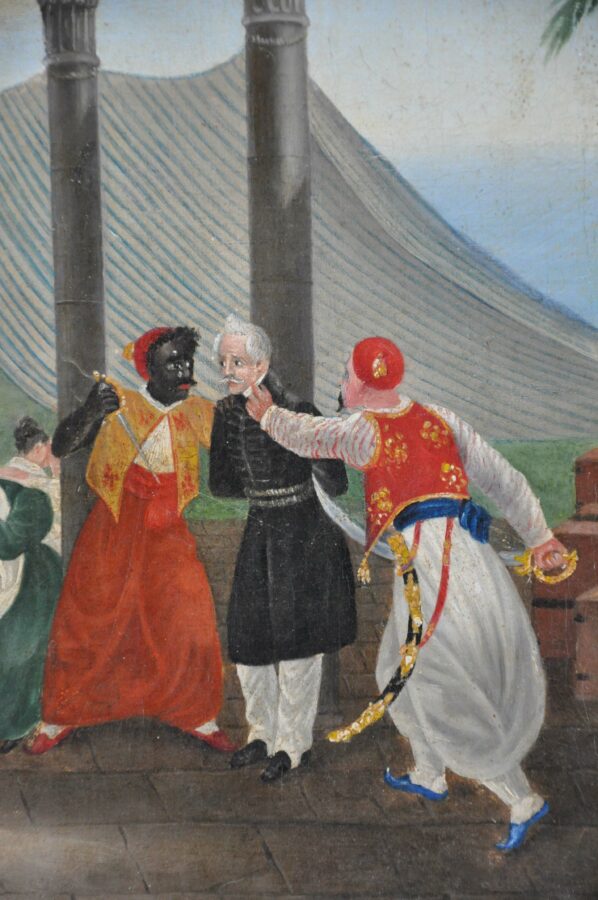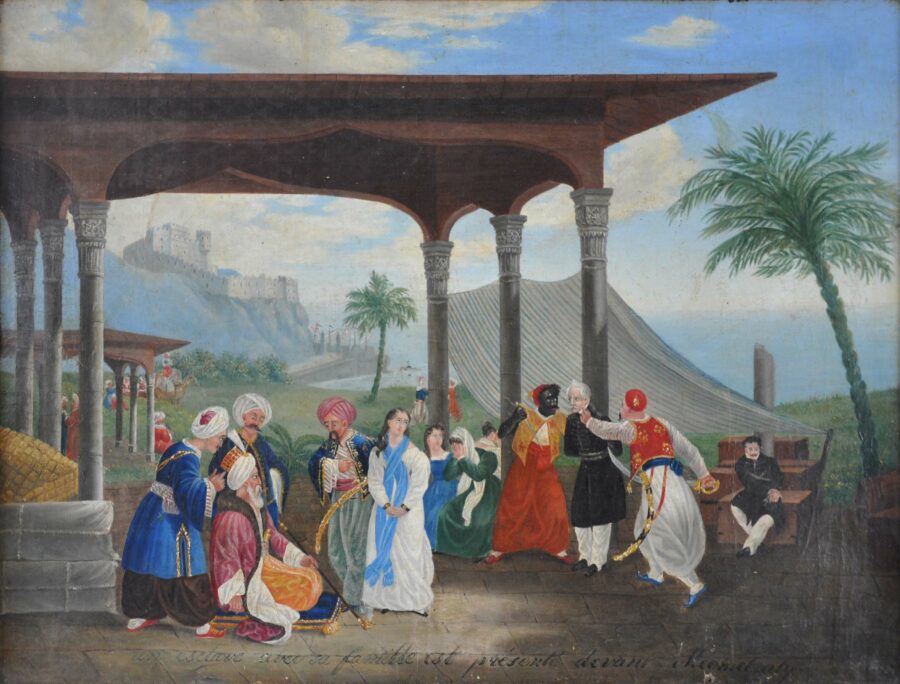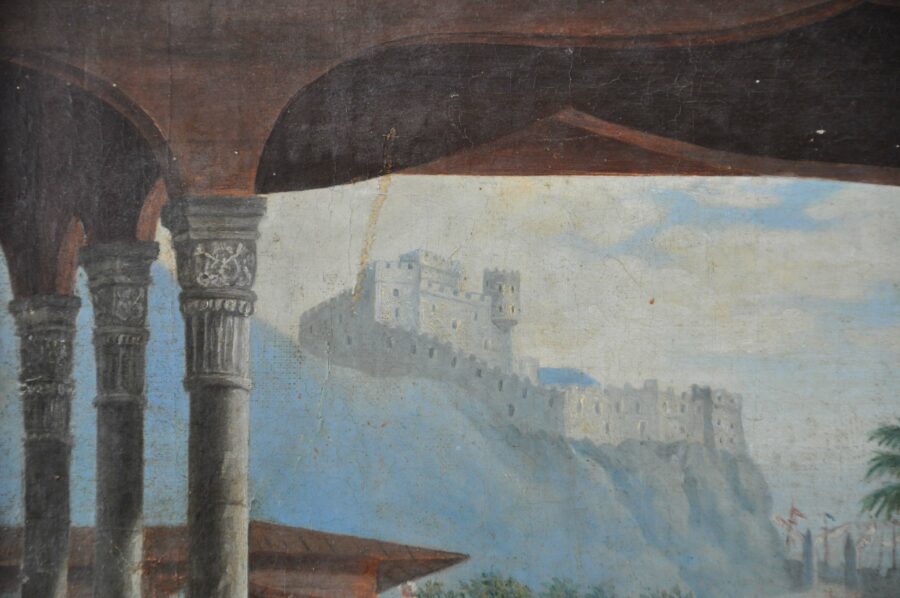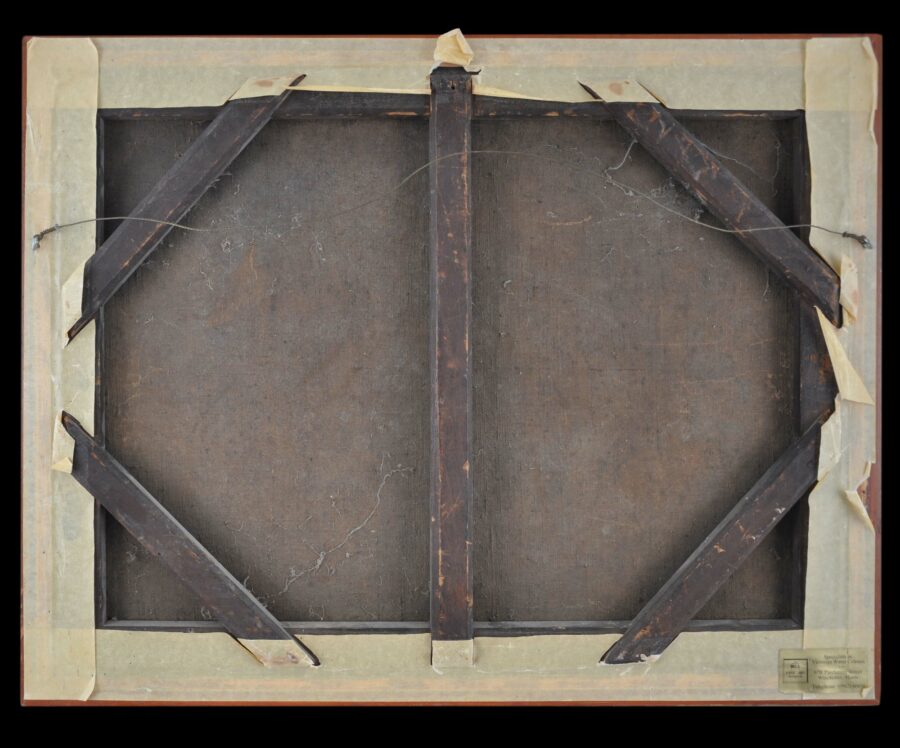This unsigned but inscribed oil painting on canvas, which dates to around 1820, shows captured French soldiers and their families. They are likely to be taken as slaves and are being presented to Muhammad Ali, the commander of the Ottoman forces in Egypt. The Ottomans are turbaned with fine court dress and jewelled sabres. The French soldiers and wives look suitably forlorn and distressed.
An elegantly rendered caption in black paint at the bottom of the canvas reads ‘un eslave avec la famille est presente devant Memet aly’ (‘a slave with the family is presented in front of Memet aly.’
Muhammad Ali Pasha al-Mas’ud ibn Agha, known as Muhammad Ali of Egypt and the Sudan (b. 1769-1849), was the Ottoman governor and de facto ruler of Egypt from 1805 to 1848. The lands under his jurisdiction included Lower and Upper Egypt, Sudan, all of the Levant and parts of the Arabian Peninsula.
He was a military commander in Ottoman Albania and was sent to Egypt to recover the territory from French occupation under Napoleon. (The French campaign in Egypt and Syria lasted from 1798 to 1801). It is this period to which the subject matter of the painting relates. Subsequent to the withdrawal of the French, Muhammad Ali consolidated his power in Egypt and in 1805 was named as Wali or Viceroy of Egypt and awarded the rank of Pasha.
Muhammad Ali was born in Kavala in Ottoman-controlled Macedonia. This painting, whilst ostensibly in Egypt with the tent awning and palm tree, also refers to Muhammad Ali’s place of birth by showing what is likely to be the Fortress of Kavala in the background. The Fortress or Castle was reconstructed by the Ottomans in 1425.
The manner of the painting dates it to around 1820 and possibly earlier (the French were chased out of Egypt in 1801.)
The condition of the painting is relatively good. It is without restoration (there is a small depression to the canvas on the lower right) and is on its original (bow darkened) stretchers. It has a later brown and gold frame.


